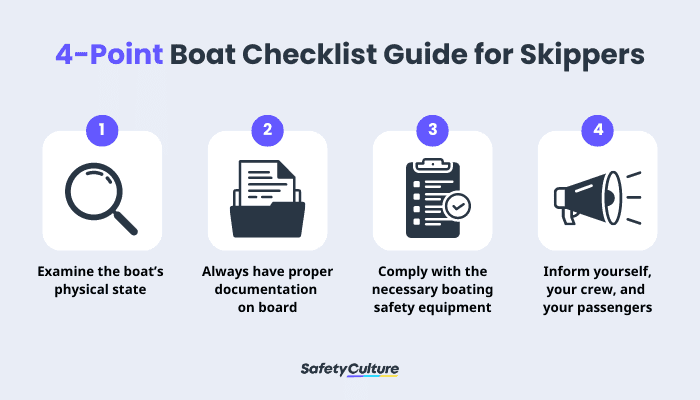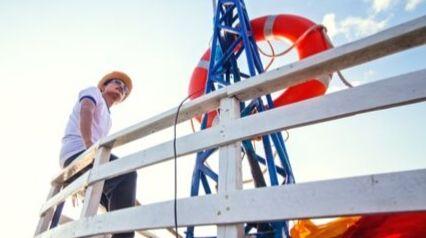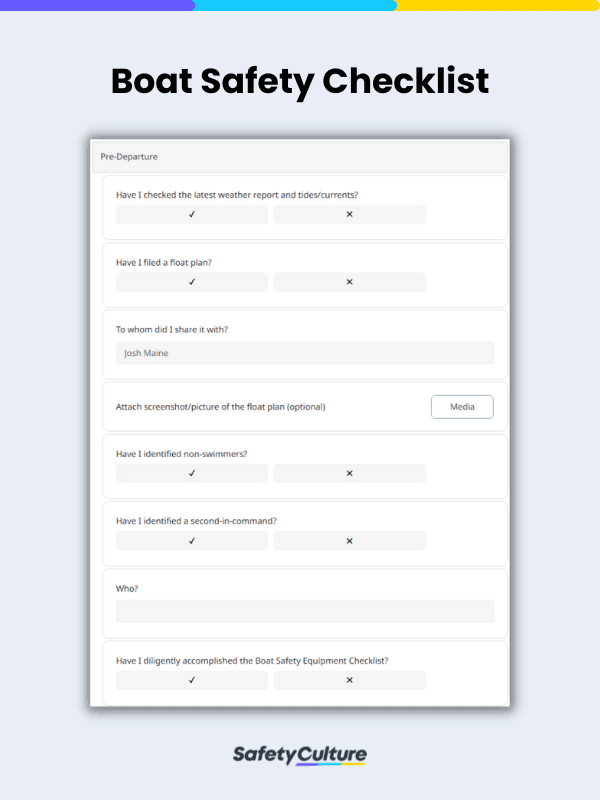What are Boat Checklists?
Boat checklists help skippers (or boat commanders) ensure that their boats, crew, and passengers leave and return to port safely. Boat checklists can help to comply with Coast Guard requirements and ensure proper emergency safety equipment is on board.
Importance of boat checklists
Skippers use comprehensive boat checklists to validate a boat’s seaworthiness before sailing. Due diligence should be exercised for every checklist item because even a simple act of negligence can jeopardize the safety of a boat’s passengers and crew.
Above: footage showing a Missouri tourist boat being engulfed by waters during stormy weather. Source: Washington Post
During a stormy night in July 2018, a duck boat sank in Branson, Missouri, leading to a total of 17 casualties. The boat’s captain faced criminal charges related to misconduct, negligence and inattention to duty. The charges alleged that the captain failed to assess weather conditions both prior to and after entering the water and failed to instruct passengers to wear floatation devices during the severe weather conditions.
This incident affirms the importance of using boat checklists and why they should always be completed with diligence.
4-Point Boat Checklist Guide for Skippers
Boat checklists cover many critical factors (including weather assessments) to help determine a boat’s compliance to safety standards. Here is a 4-point guide skippers can refer to when checking these factors in a boat checklist:

1. Examine the boat’s physical state.
Before pulling out a boat from storage, examine the engine, the exterior, and interior parts. For the engine, survey its physical state, fuel tank, and exhaust system. For external check, take a look at parts, such as the hull, propeller, navigation lights, anchors, rollers, fenders, and fibreglass. For internal check, inspect general cleanliness, inboard engine stuffing box, condition of upholstery, electrical panel, and shorepower plugs.
If defects are found, skippers can use a digital checklist to easily document and share it with a marine technician for quick response.
2. Always have proper documentation on board.
Most boats should have the following items available on board: an original and current Certificate of Documentation, Certificate of Number, Radio License, Boater Education Card, and State Numbering Display. In addition, skippers can file a float plan and share it via email with a reliable person whom they can alert in case of route changes or distress.
3. Comply with the necessary boating safety equipment.
State regulations require a list of must-have boating safety equipment onboard. Oftentimes, a Coast Guard representative can come aboard to check on these. A boat safety equipment checklist enumerates critical items that can be of great help in case of an emergency, including a set of state-approved PFD, basic first aid kit, fire extinguishers, visual distress signals (VSD), sound-producing devices, VHF radio and cell phone, and ventilation.
Skippers may use a digital checklist to attach helpful guides, such as a map of the safety equipment’s locations, to improve efficiency in checking these items.
4. Inform yourself, your crew, and your passengers
Avoid relying on stock knowledge alone; always check the latest weather radar and sea reports before any trip, and carefully decide if it is safe to go. Reorient yourself with the waters you are navigating and be on the lookout for changes in wind speed, tides/currents, and cloud formations. If you have crew and passengers with you, do not forget to share with them important safety knowledge and remind them of the boating rules and location of important items aboard.
https://www.washingtonpost.com/video/c/embed/11a4726c-8bcd-11e8-9d59-dccc2c0cabcfhttps://www.washingtonpost.com/national/lord-just-let-me-die-survivor-relives-deadly-duck-boat-accident/2018/07/19/11a4726c-8bcd-11e8-9d59-dccc2c0cabcf_video.html



